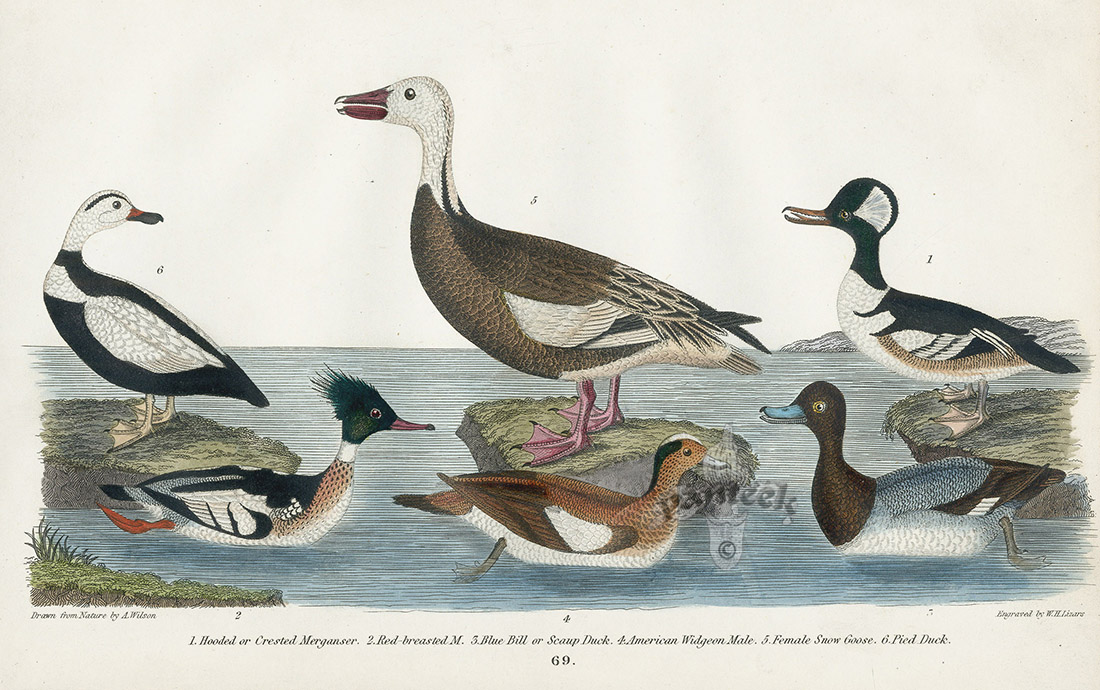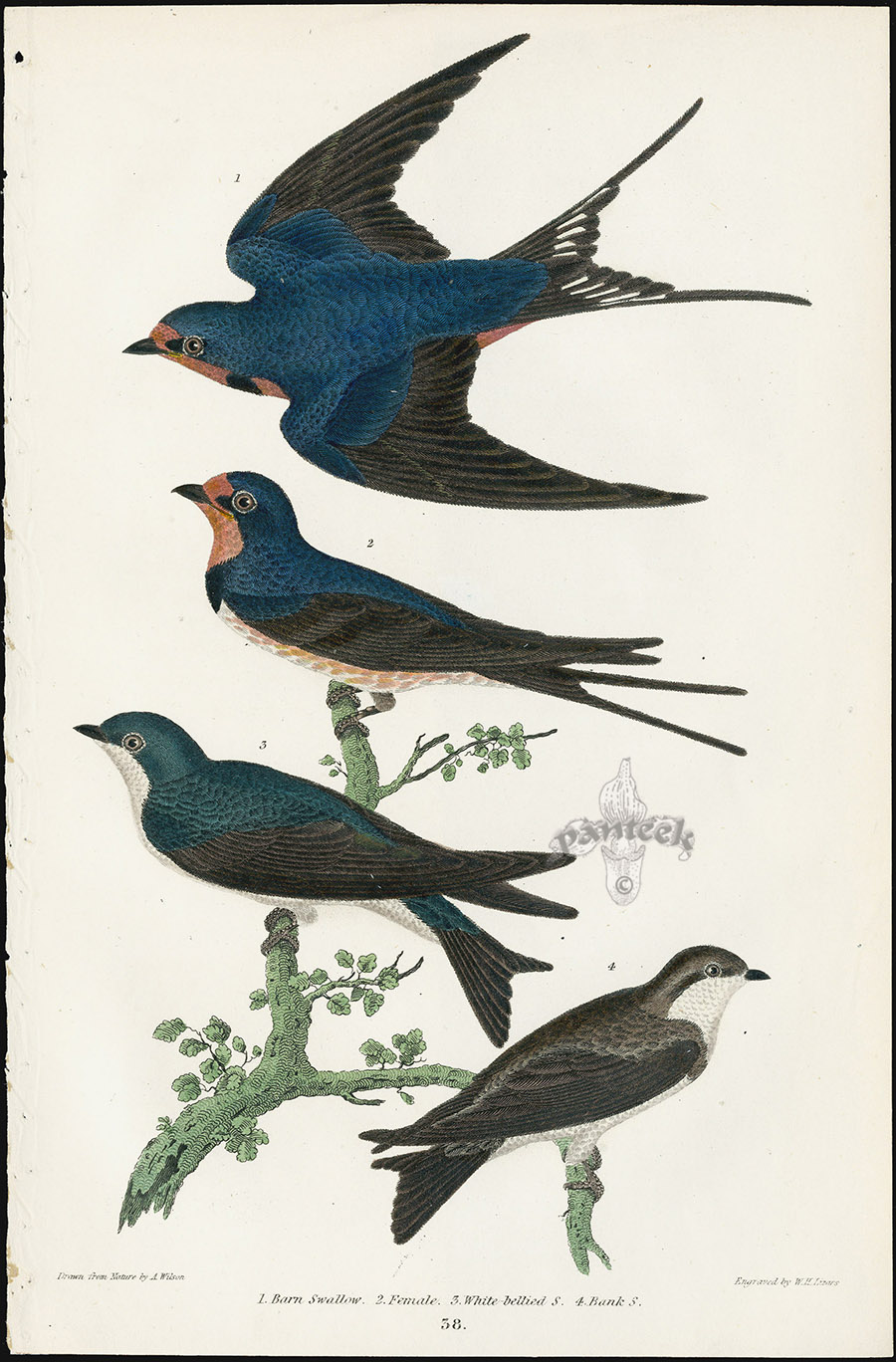|
While our images are electronically watermarked, the antique prints themselves are not.
Hooded or Crested Merganser, Red-breasted Merganser, Blue Bill or Scaup Duck, American Widgeon, Snow Goose, Pied Duck AWJ148 $55
Each print measures
approximately 5 ½ wide by 8 ½ inches long
Alexander Wilson was born in Scotland, the son of a poor distiller, and was apprenticed as a weaver. An imaginative youth, his first love was poetry, and he soon renounced his humdrum life for the lure of adventure and prosperity in the new world. Arriving in America in 1794, he settled near the cultural mecca of the day, Philadelphia, finding work as a teacher. He met William Bartram, the American naturalist and artist, who encouraged Wilson's interest in ornithology. So inspired, Wilson taught himself to draw and embarked on the work that was not only to take the rest of his life, but also predated Audubon's Birds of America.
Wilson spent ten years of his life traveling widely in the eastern United States, discovering 26 previously unknown species. In the next hundred years, only 23 more American land birds would be identified. The first edition of American Ornithology was printed from 1808-1814 and was an outstanding contribution to the world of ornithology as the first work on American birds, printed in America. Sadly, Wilson died in 1813 before the completion of the publication and it was completed by George Ord.
This outstanding work cemented his reputation as a pioneer in American nature literature and illustration. As the late scientist and historian Dr. Elliott Coues remarked, "Perhaps no other work on ornithology of equal extent is equally free from error, and its truthfulness is illuminated by a spark of the 'fire divine'." Film director and writer Whitman Bennett, also a dealer in rare books, called Wilson's work "absolutely basic as a collector's item" and "unjustly overshadowed" by the later Audubon folios.
The first edition was published on a poor-quality paper due to financial constraints. Fifteen years later, due to the success of the work, the financing was available to publish an edition on high quality paper with superior hand coloring. Please see our listings for selections from this second edition.
It is from the 1832 edition that comprises this selection of all the important birds of America. It is a unique edition in that it is octavo size and with vivid hand coloring enhanced by gum arabic. The paper is wove stock of a creamy color with some occasional foxing, measuring approximately 5 ½ wide by 8 ½ inches long. The original binding edge, which is shown here,
|


